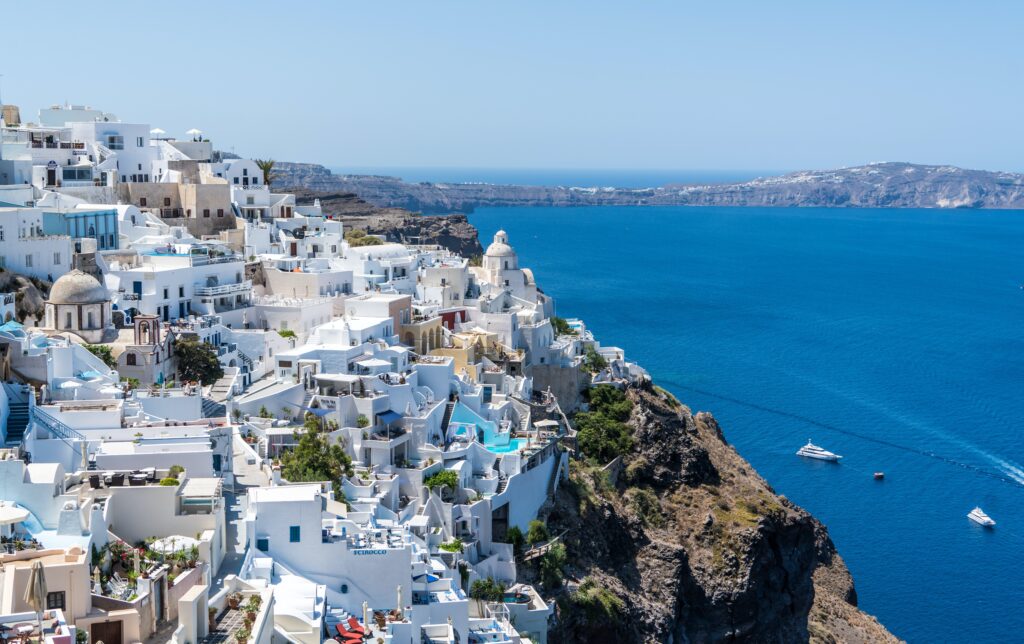Table of Contents
ToggleThe 5 Best Places to Retire in Italy: A Comprehensive Guide
Introduction
Italy, with its stunning landscapes, rich cultural heritage, and world-renowned cuisine, is a dream destination for many retirees. From its picturesque coastal towns to its historic cities, Italy offers a variety of retirement options that cater to different lifestyles and budgets. This article explores five of the best places to retire in Italy, focusing on the cost of living, lifestyle, and key considerations for retirees.
1. Tuscany: The Heart of Italian Culture
Tuscany, a region famed for its rolling hills, vineyards, and medieval towns, is one of the most desirable retirement destinations in Italy. Cities like Florence, Siena, and Lucca offer a mix of cultural richness and modern conveniences, making Tuscany a perfect blend of the old and new.
Cost of Living:
Living in Tuscany can vary widely depending on whether you choose a city or a rural area. In Florence, a major city with a high concentration of art and history, the cost of living is relatively high. Renting a one-bedroom apartment in the city center can cost around €1,000 to €1,500 per month, while outside the city center, rents drop to €600 to €1,000. Monthly expenses, including utilities, groceries, and transportation, can range between €1,200 and €2,000, depending on your lifestyle.
In contrast, smaller towns and rural areas in Tuscany offer a more affordable lifestyle. Towns like Lucca and Siena provide a high quality of life with lower living costs. Renting a one-bedroom apartment outside the city center in these towns can cost between €500 and €800 per month. Overall, a comfortable retirement in Tuscany can be achieved with a budget of €2,000 to €3,500 per month.
Lifestyle:
Tuscany offers retirees a peaceful and culturally enriched lifestyle. The region is known for its slow pace of life, allowing retirees to enjoy leisurely activities such as wine tasting, exploring historical sites, and engaging in the vibrant local art scene. The region’s warm climate and scenic beauty also provide ample opportunities for outdoor activities.
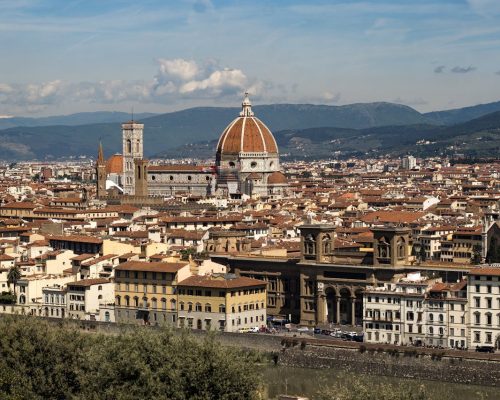
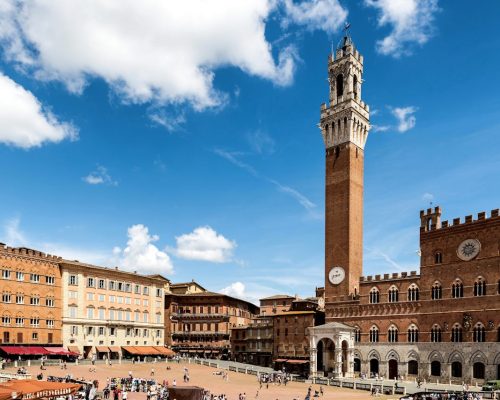

2. Sicily: The Island of History and Nature
Sicily, the largest island in the Mediterranean, is a region rich in history, culture, and natural beauty. The island’s cities, such as Palermo, Catania, and Syracuse, offer a unique blend of ancient history and modern amenities, making it an attractive destination for retirees.
Cost of Living:
Sicily is one of the most affordable regions in Italy. In Palermo, the island’s capital, a one-bedroom apartment in the city center can be rented for €500 to €700 per month, while outside the city center, rents can be as low as €300 to €500. The cost of groceries, dining out, and other daily expenses are also significantly lower compared to mainland Italy.
Overall, a retiree can live comfortably in Sicily with a budget of €1,500 to €2,500 per month. This budget covers housing, utilities, groceries, transportation, and healthcare. The affordability of Sicily makes it an attractive option for retirees looking for a high quality of life on a modest budget.
Lifestyle:
Sicily offers a rich cultural experience with its ancient ruins, baroque architecture, and vibrant festivals. The island’s diverse landscape, ranging from beautiful beaches to mountainous terrain, provides ample opportunities for outdoor activities. The warm Mediterranean climate also ensures mild winters and hot summers, perfect for those who enjoy the sun.
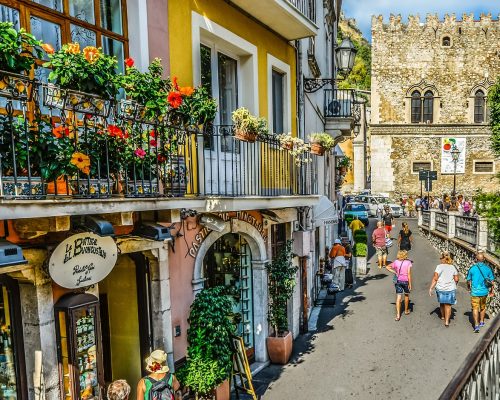
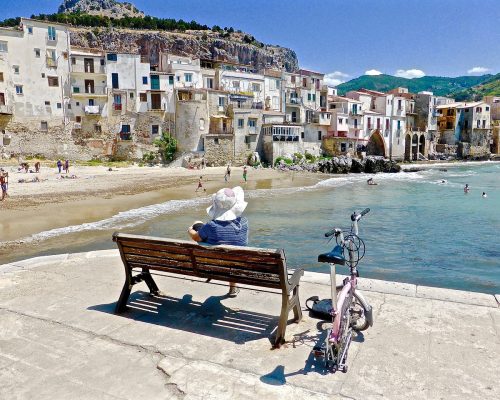
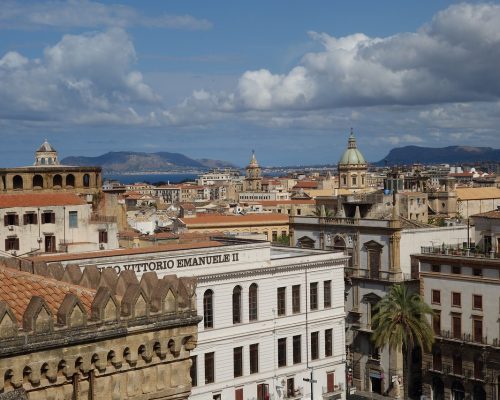
3. Umbria: The Green Heart of Italy
Umbria, often referred to as the “Green Heart of Italy,” is a landlocked region known for its lush landscapes, medieval hill towns, and tranquil lifestyle. Cities like Perugia, Assisi, and Orvieto offer a blend of historic charm and modern amenities, making Umbria an attractive option for retirees seeking a peaceful yet culturally rich environment.
Cost of Living:
Umbria offers a more affordable cost of living compared to Tuscany, its more famous neighbor. In Perugia, the region’s capital, a one-bedroom apartment in the city center can be rented for €500 to €700 per month, while outside the city center, rents drop to €400 to €600. Monthly living expenses, including utilities, groceries, and transportation, can range between €1,200 and €2,000, depending on your lifestyle.
Living in smaller towns and rural areas in Umbria can be even more affordable. In towns like Assisi and Orvieto, you can find lower rental costs and enjoy a slower pace of life. Overall, a retiree can live comfortably in Umbria with a budget of €1,800 to €2,800 per month.
Lifestyle:
Umbria offers a serene and laid-back lifestyle, perfect for retirees seeking a slower pace of life. The region is known for its strong sense of community, and retirees can immerse themselves in local traditions and festivals. The beautiful natural surroundings also provide opportunities for hiking, cycling, and exploring the region’s numerous vineyards and olive groves.
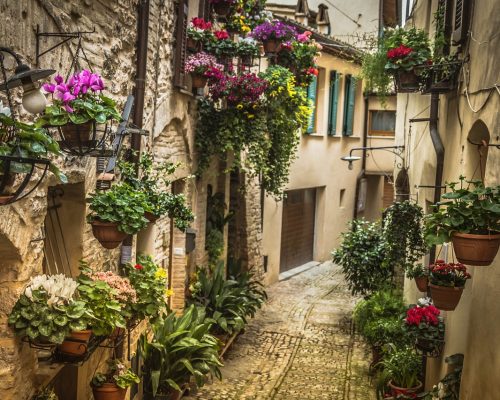
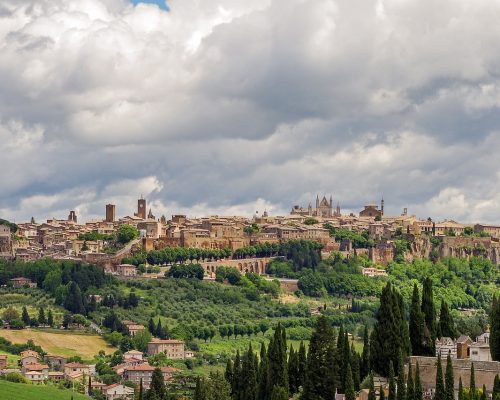
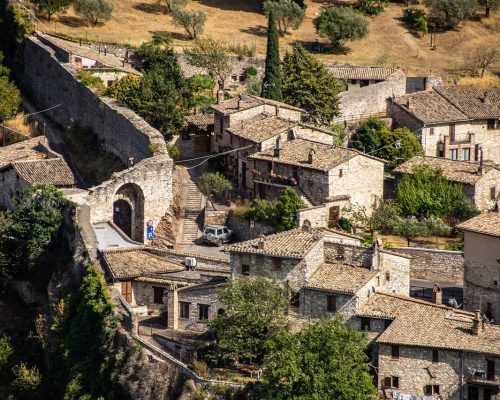
4. Liguria: The Italian Riviera
Liguria, a narrow coastal region in northwestern Italy, is famous for its picturesque seaside towns, such as Portofino, Cinque Terre, and Sanremo. The region’s mild climate, stunning coastline, and proximity to France make it an appealing retirement destination.
Cost of Living:
The cost of living in Liguria varies depending on the location. In popular tourist areas like Portofino and Cinque Terre, living costs can be relatively high. Renting a one-bedroom apartment in these areas can cost between €800 and €1,500 per month, while outside the prime tourist spots, rents drop to €600 to €900.
However, there are more affordable options in less touristy towns like Sanremo or La Spezia. In these towns, a one-bedroom apartment can be rented for €600 to €900 per month, and overall monthly expenses can range between €1,500 and €2,500.
Lifestyle:
Liguria offers a relaxed coastal lifestyle with a focus on outdoor activities such as sailing, hiking, and enjoying the region’s beautiful beaches. The region’s mild climate, particularly in the winter, is a significant draw for retirees. Liguria also offers excellent cuisine, with fresh seafood and local wines being a highlight.
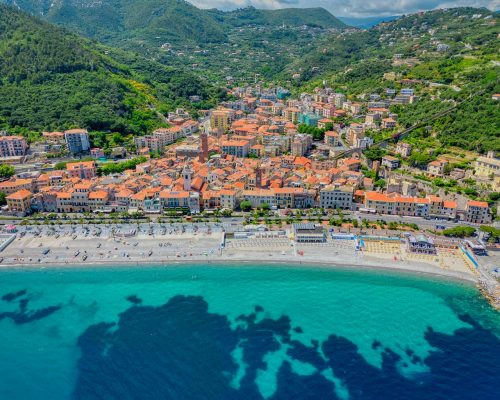
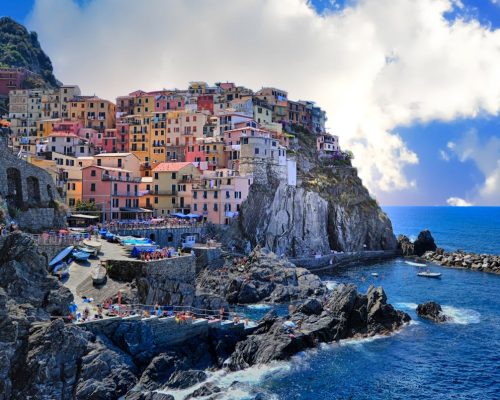
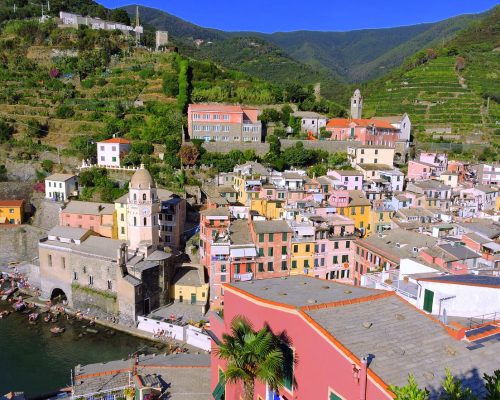
5. Puglia: The Heel of Italy’s Boot
Puglia, located in the southern part of Italy, is known for its whitewashed hill towns, centuries-old farmland, and stunning coastline along the Adriatic and Ionian seas. The region’s cities, such as Bari, Lecce, and Ostuni, offer a mix of historic charm and modern conveniences.
Cost of Living:
Puglia is one of the more affordable regions in Italy, making it an attractive option for retirees on a budget. In Bari, the region’s capital, a one-bedroom apartment in the city center can be rented for €500 to €700 per month, while outside the city center, rents drop to €300 to €500. Other living expenses, including groceries, dining out, and transportation, are also relatively low.
In smaller towns like Ostuni and Lecce, the cost of living is even lower. A retiree can live comfortably in Puglia with a budget of €1,500 to €2,500 per month, covering housing, utilities, groceries, transportation, and healthcare.
Lifestyle:
Puglia offers a laid-back lifestyle with a focus on local traditions and a strong sense of community. The region is known for its beautiful beaches, historic architecture, and excellent cuisine, particularly its olive oil and wine. The warm climate, with hot summers and mild winters, makes Puglia an ideal destination for those who enjoy a Mediterranean lifestyle.

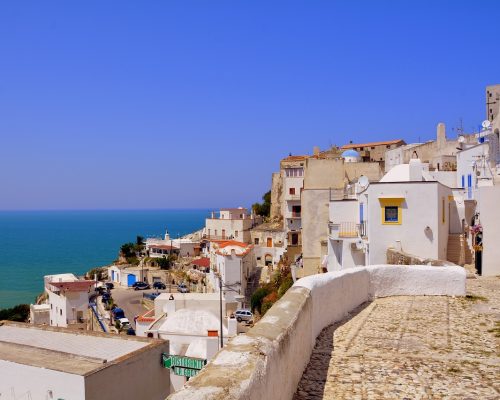
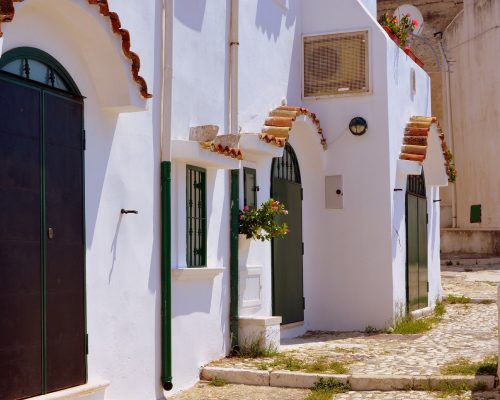
Conclusion: Finding Your Perfect Italian Retreat
Retiring in Italy offers a unique opportunity to immerse yourself in a rich cultural heritage, enjoy beautiful landscapes, and experience a high quality of life. The five regions highlighted—Tuscany, Sicily, Umbria, Liguria, and Puglia—each offer something unique, catering to different lifestyles and budgets.
When considering retirement in Italy, it’s essential to factor in the cost of living, lifestyle preferences, and access to healthcare and other amenities. Whether you prefer the cultural vibrancy of Tuscany, the affordability of Sicily, the tranquility of Umbria, the coastal beauty of Liguria, or the laid-back charm of Puglia, Italy has something to offer every retiree.
In addition to these considerations, retirees should also explore visa requirements, language barriers, and integration into the local community. With careful planning and research, retiring in Italy can be a fulfilling and enriching experience, allowing you to enjoy the best that this beautiful country has to offer.
Frequently Asked Questions (FAQ)
1. What are the visa requirements for retiring in Italy?
To retire in Italy, non-EU citizens typically need to apply for an Elective Residence Visa (ERV). This visa is intended for those who can support themselves financially without working in Italy. Applicants must demonstrate sufficient income or savings, such as pensions, investments, or savings accounts, to cover living expenses. The minimum income requirement varies by region but is generally around €31,000 per year for an individual and €38,000 for a couple. After obtaining the visa, retirees must apply for a residence permit within eight days of arriving in Italy.
2. How does healthcare work for retirees in Italy?
Italy has a well-regarded public healthcare system (Servizio Sanitario Nazionale or SSN), which provides comprehensive coverage to residents, including retirees. EU citizens can access the SSN upon obtaining residency. Non-EU citizens may need to purchase private health insurance before they can enroll in the SSN. Once enrolled, you’ll pay a yearly fee based on your income to access public healthcare services. Private healthcare is also available for those who prefer it, and many retirees opt for a combination of public and private care.
3. Is it necessary to speak Italian to retire in Italy?
While it’s not mandatory to speak Italian to retire in Italy, knowing the language can significantly enhance your experience and help you integrate into the local community. In larger cities and popular tourist areas, English is more widely spoken, but in smaller towns and rural areas, you may find fewer English speakers. Many retirees take Italian language courses to improve their communication skills and better enjoy their time in Italy.
4. How easy is it to buy property in Italy as a retiree?
Buying property in Italy is relatively straightforward for foreign retirees. There are no restrictions on property purchases for EU citizens, and non-EU citizens can also buy property, provided their home country has a reciprocity agreement with Italy. The process involves hiring a real estate agent, obtaining a tax code (Codice Fiscale), and working with a notary to finalize the purchase. Property prices vary greatly depending on the location, with rural areas and smaller towns generally offering more affordable options than major cities or popular tourist destinations.
5. What is the tax situation for retirees in Italy?
Italy has tax treaties with many countries to avoid double taxation on foreign income. Retirees who become tax residents in Italy are subject to Italian income tax on their worldwide income. However, Italy offers favorable tax schemes for retirees from certain countries, including a flat 7% tax on foreign income for retirees who move to specific regions in Southern Italy, such as Sicily, Calabria, and Sardinia. It’s advisable to consult with a tax professional to understand your specific situation and obligations.
6. How do I access banking services as a retiree in Italy?
Opening a bank account in Italy as a retiree is relatively simple. You’ll need to provide identification, such as a passport, proof of address in Italy, and a tax code (Codice Fiscale). Some banks may also require proof of income. Most major banks offer accounts tailored to expatriates, with English-speaking staff available in larger cities. It’s advisable to compare different banks and their services to find the one that best suits your needs.
7. Can I work part-time or volunteer while retired in Italy?
Non-EU citizens who retire in Italy on an Elective Residence Visa are generally not allowed to work. However, volunteering is permitted and is a popular way for retirees to engage with the local community and stay active. EU citizens, on the other hand, have the freedom to work or volunteer without restrictions, provided they register as residents.
8. How does the cost of living in Italy compare to other European countries?
The cost of living in Italy can vary significantly depending on the region, with the north generally being more expensive than the south. Overall, Italy offers a moderate cost of living compared to other Western European countries. Retirees can enjoy a high quality of life, particularly in regions like Sicily, Umbria, and Puglia, where housing and daily expenses are lower. However, major cities and tourist areas like Rome, Milan, and Florence can be more costly.
9. What are the options for transportation in Italy?
Italy has a well-developed public transportation system, including trains, buses, and trams, which makes getting around easy and affordable. The national rail service (Trenitalia) connects major cities and regions, while local buses and trams are available in towns and cities. In more rural areas, having a car may be more convenient. Retirees can drive in Italy with an EU driving license or an International Driving Permit (IDP) for non-EU citizens, but it’s advisable to familiarize yourself with Italian driving laws and road conditions.
10. How can I stay connected with family and friends back home?
Staying connected with loved ones is easy in Italy, thanks to widespread internet availability and mobile phone services. Many retirees opt for internet and mobile plans that include international calling or use apps like Skype, WhatsApp, or Zoom for free video and voice calls. In larger cities, you’ll find English-language media, including newspapers, magazines, and television channels, to help you stay informed about news from home.
Helpful Travel Planning Tips
Flights:
Search and book with ORBITZ. They search across 100s of travel sites to compare prices. If you are not ready to book? Set alerts for when prices drop.
Accommodations:
To book a hotel, check Hotels.com
Check here for Hostels
Travel Insurance:
I recommend getting travel insurance from Travelex Insurance to protect your purchase as soon as you book.
Activities:
For tickets, tours, and day trips, check with KLOOK.
Restaurants:
Disclosure: Please note that some links on this website are affiliate links. At no cost to you, I receive a commission if you make a purchase. I only recommend companies that I research and would use.








